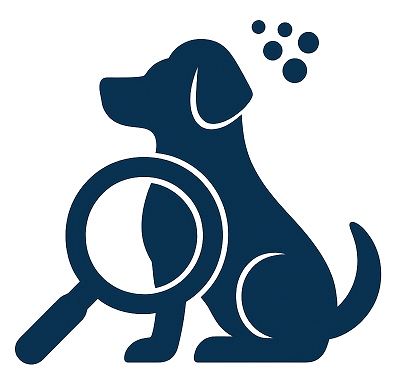
“`html
Understanding Adult Dog Separation Anxiety
Separation anxiety in adult dogs is a common behavioral issue that manifests as fear or distress when a dog is left alone or separated from its owner. It is crucial to recognize the signs early and address them with effective solutions to ensure the well-being of your pet and maintain a harmonious household. This article explores the causes, symptoms, and practical solutions for managing and alleviating separation anxiety in adult dogs.
Recognizing the Symptoms of Separation Anxiety
The first step in addressing separation anxiety is identifying the signs. These may vary from dog to dog but generally include:
– **Excessive Barking or Howling**: Dogs with separation anxiety often vocalize their distress when left alone.
– **Destructive Behavior**: This can include chewing furniture, digging at doors, or other forms of property destruction.
– **Escape Attempts**: Dogs may try to escape from confinement areas, which can lead to injury.
– **House Soiling**: Anxious dogs may urinate or defecate indoors, even if they are house-trained.
– **Pacing**: Repetitive pacing in a fixed pattern is a common indicator of anxiety.
– **Self-Injury**: Some dogs may lick or bite themselves excessively, leading to injuries.
Causes of Separation Anxiety in Adult Dogs
Understanding the root causes of separation anxiety can help in formulating effective solutions:
– **Change in Routine**: A sudden change in the owner’s schedule can trigger anxiety.
– **Change of Environment**: Moving to a new home can cause stress and anxiety.
– **Loss of a Family Member**: The absence of a familiar person or pet can result in anxiety.
– **Lack of Socialization**: Dogs that have not been adequately socialized may struggle with being alone.
– **Traumatic Events**: Past traumas or experiences can lead to anxiety-related behaviors.
Effective Solutions for Managing Separation Anxiety
Addressing separation anxiety requires a comprehensive approach that combines behavior modification, environmental management, and in some cases, medical intervention.
Behavior Modification Techniques
– **Desensitization and Counterconditioning**: Gradually acclimate your dog to being alone by leaving for short periods and gradually increasing the duration. Pairing your departures with positive experiences, such as treats or toys, can help change your dog’s emotional response.
– **Establish a Pre-Departure Routine**: Create a consistent routine that signals to your dog that you are leaving. This can include picking up your keys or putting on your coat. Over time, your dog will learn to associate these cues with brief absences.
– **Positive Reinforcement Training**: Reward calm behavior and independence. For instance, give treats or praise when your dog remains calm during your departure preparations.
Environmental Management
– **Create a Safe Space**: Designate an area in your home where your dog feels comfortable and secure. This space should include bedding, toys, and water.
– **Interactive Toys and Puzzles**: Provide your dog with engaging toys that can keep them occupied while you are away. Puzzle toys can stimulate their mind and distract them from your absence.
– **Background Noise**: Leave a radio or television on to provide background noise, which can help reduce the feeling of loneliness.
– **Exercise**: Ensure your dog receives adequate physical and mental exercise before you leave. A well-exercised dog is more likely to rest while you’re away.
Medical Intervention
In cases where behavioral and environmental strategies are insufficient, consulting a veterinarian may be necessary. They can evaluate whether medication or supplements might help alleviate your dog’s anxiety. Options include:
– **Anti-Anxiety Medications**: Prescription medications can help reduce anxiety levels and are particularly useful during the initial stages of behavior modification.
– **Natural Supplements**: Products containing ingredients like L-theanine, chamomile, or valerian root may help calm anxious dogs.
Consistency and Patience Are Key
Consistency in training and environmental management is crucial when addressing separation anxiety. It’s essential to remain patient and understand that progress may be gradual. Dogs thrive on routine and predictability, so maintaining a consistent schedule and approach can significantly aid in reducing anxiety.
When to Seek Professional Help
If your dog’s separation anxiety persists despite your best efforts, it may be time to seek professional help. A certified dog trainer or a veterinary behaviorist can provide tailored strategies and guidance. These professionals have the expertise to assess your dog’s behavior and develop a comprehensive plan to address the issue effectively.
Preventing Separation Anxiety in the Future
Preventing separation anxiety is often easier than treating it. Here are some preventive measures for dog owners:
– **Early Socialization**: Socialize your dog from a young age to different environments, people, and situations. This helps them become more adaptable and less prone to anxiety.
– **Gradual Independence Training**: Teach your dog to enjoy spending time alone from an early age. Start with short periods and gradually increase the duration.
– **Maintain a Predictable Routine**: Dogs feel secure when they know what to expect. Keeping a consistent daily routine can help reduce anxiety.
Conclusion
Separation anxiety in adult dogs can be challenging for both the pet and the owner. However, with patience, dedication, and the right approach, it is possible to manage and even overcome this issue. By understanding the causes and symptoms, implementing effective behavior modification techniques, and creating a supportive environment, you can help your dog feel more secure and comfortable when left alone. Remember, each dog is unique, and finding the right solution may take time, but the effort is well worth the reward of a happy, healthy, and anxiety-free companion.
“`













